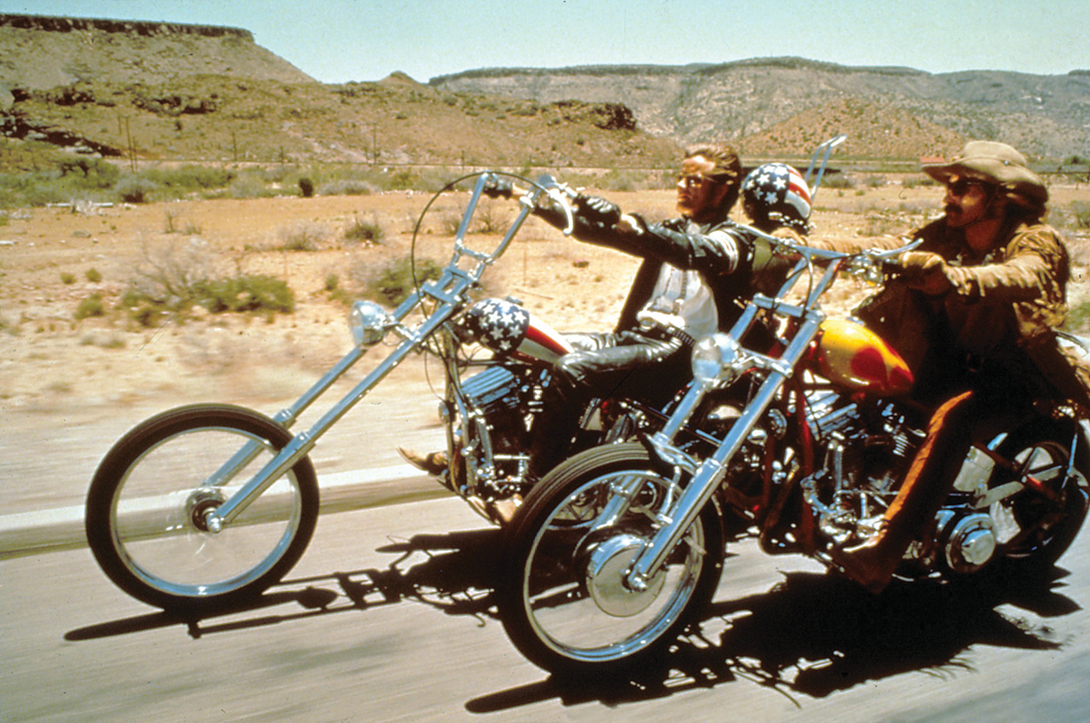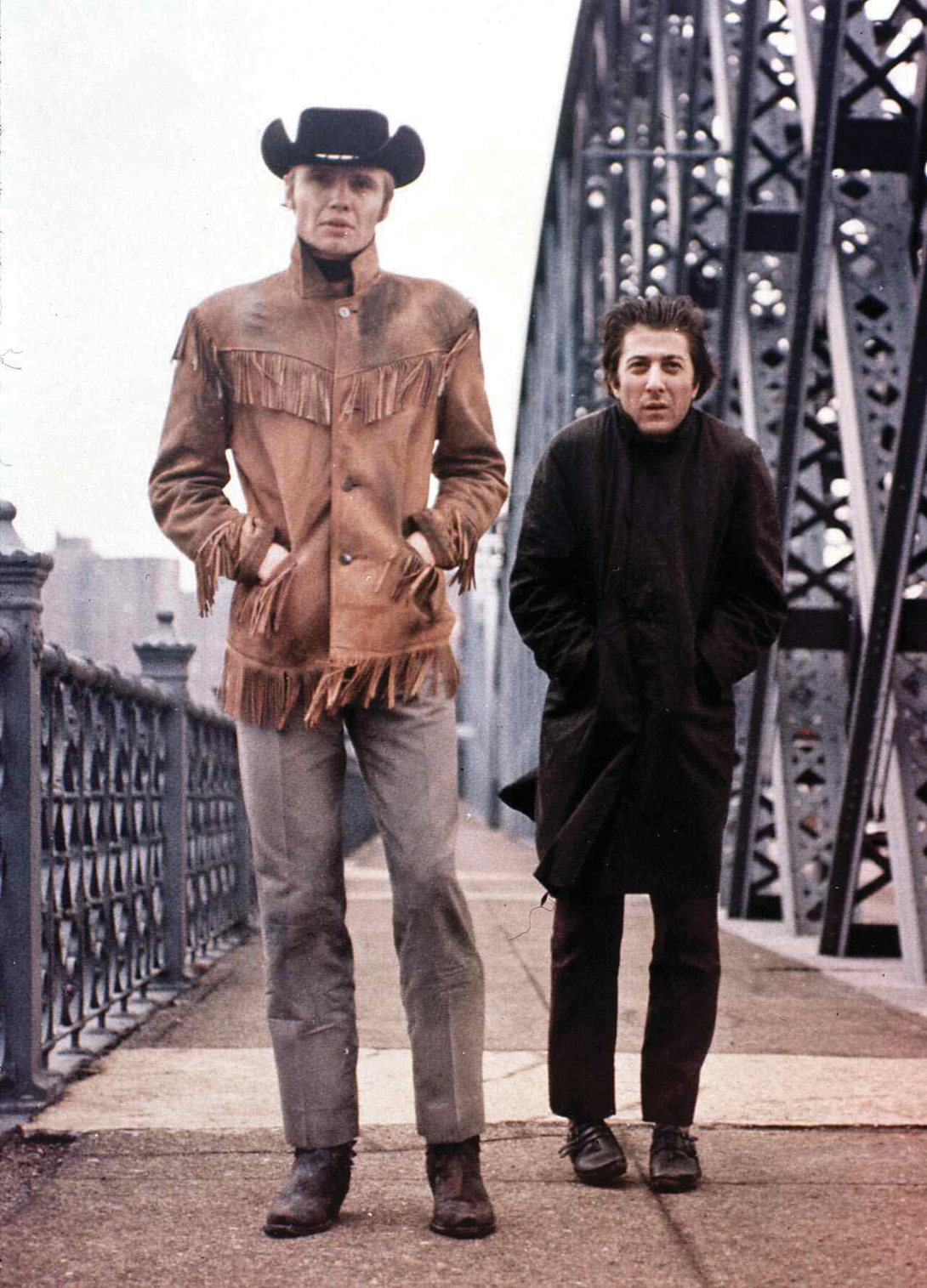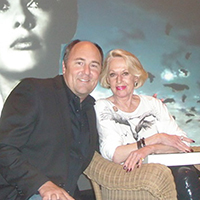QUENTIN TARANTINO’S LATEST FILM, Once Upon a Time … in Hollywood, takes us back in time to the entertainment world of 1969, when Tinseltown was in transition. This was nothing new in the film industry — the movies have always been constantly evolving as audience tastes, technological inventions and the creative talent of the new blood meshes with that of the old guard to push things in a (mostly) forward direction.
Tarantino’s movie fantasizes that the old guard and new blood of Hollywood ’69 might have moved into the 1970s with more congruity than the real history allowed.
While events in real life may have played out a bit differently than in Tarantino’s fairy tale, the truth is that 1969 was a remarkable year at the movies, one with many films worth reflecting on, both for timelessness and for how they documented their particular time in such a fascinating way.
There have been many great years in Hollywood, frequently with peaks at the end of each decade. In 1939, audiences were just 10 years past the invention of talkies and had just been introduced to Technicolor when Gone With the Wind, The Wizard of Oz, Mr. Smith Goes to Washington, Gunga Din and Stagecoach were released in what many consider to be Hollywood’s greatest year.
More recently, 1999 saw Hollywood producing films by then-new directors, such as Spike Jonze’s Being John Malkovich, Sam Mendes’ American Beauty and M. Night Shyamalan’s The Sixth Sense, and by veteran filmmakers at the top of their game: David Lynch’s The Straight Story, Michael Mann’s The Insider and Anthony Minghella’s The Talented Mr. Ripley.
For its combination of classic Hollywood and exciting new talent, though, 1969 takes the cake.
It was a time when the formulas from cinema’s golden age were still working. Gene Kelly directed Barbra Streisand to an Oscar in the opulent musical Hello, Dolly! James Bond was still fresh. Even without Sean Connery, George Lazenby’s only turn as 007, On Her Majesty’s Secret Service, finished in the top 10 at the box office.
The western, that tried-and-true genre of both television and film, may have been falling from fashion, but it went out with a bang. Butch Cassidy and the Sundance Kid was the year’s biggest hit, leaning on the contemporary charms of its ultrahip stars, Paul Newman and Robert Redford, and B.J. Thomas’ AM-radio hit “Raindrops Keep Fallin’ On My Head.” Sam Peckinpah’s The Wild Bunch featured extreme violence and its cast of killers had no hero in a white hat. Even True Grit cast pop star Glen Campbell next to John Wayne, who won his only Oscar for the film.

Meanwhile, two of the year’s surprise hits reinvented the western in exciting ways. Easy Rider replaced horses with Harleys as Peter Fonda and Dennis Hopper rode into the sunset. And Midnight Cowboy, with Jon Voight and Dustin Hoffman plying the heroin-scarred streets of Times Square, received an X rating on initial release. In fact, the ratings system was in its infancy, with the Motion Picture Association of America designating films as G, M (later PG), R, or X (later NC-17).

The year 1969 ushered in a generation of filmmakers who wanted to break free from the studio system. In San Francisco, Francis Ford Coppola created American Zoetrope, a production company for indie-minded moviemakers; its first film was Coppola’s haunting The Rain People. By the end of its first decade the company had produced George Lucas’ American Graffiti and Coppola’s The Godfather, The Godfather Part II, The Conversation and Apocalypse Now, each nominated for an Oscar for Best Picture.
Audiences in 1969 were open to new ideas onscreen. Midnight Cowboy and Easy Rider were massive hits, finishing the year behind only Butch and Sundance at the box office. Adult-minded films like the free-love-themed Bob & Carol & Ted & Alice, the hippieish comedy Cactus Flower and the dramatic adaptation of Philip Roth’s novella Goodbye, Columbus were also among the year’s top 10 highest-grossing movies. It’s difficult to imagine a studio even releasing those films today, let alone audiences packing a multiplex to see them.
If anything, 2019 feels closer to 1989, the year Tim Burton’s Batman, Indiana Jones and the Lost Crusade, Back to the Future Part II and Lethal Weapon 2 topped the box office charts. Sequels and franchises were on the rise. During the first eight months of 2019, the top hits were Avengers: Endgame, Captain Marvel, Toy Story 4, The Lion King, Aladdin and Spider Man: Far From Home — all sequels or franchise movies, all produced by Disney.
10 Films from ’69
Hopefully, 10 years from now we’ll see the next 1939, 1969 or 1999 at the movies. For now, here are some time capsules that capture a very special period in Hollywood history.
Bob & Carol & Ted & Alice
Director Paul Mazursky created a sensation with this partner-swapping comedy starring Elliott Gould, Natalie Wood, Robert Culp and Dyan Cannon. The film was an unexpected blockbuster, the fifth highest grossing of the year. It’s a fascinating snap- shot of the time, but Quincy Jones’ original score and Burt Bacharach’s “What the World Needs Now Is Love” hold up beautifully.
Easy Rider
The ultimate counterculture road trip. Ride along with Peter Fonda, Dennis Hopper and Jack Nicholson in search of America’s soul across the southern United States. Boasting one of the great classic rock soundtracks, this low-budget production touched a nerve and became a worldwide sensation. (For an extra treat, watch Albert Brooks’ 1980s take on the material in Lost in America.)
Gimme Shelter
In one of the most memorable rock documentaries, filmmakers Albert and David Maysles’ chronicle of the Rolling Stones’ U.S. tour in 1969 happens to capture the end of the Summer of Love in stunning detail. The concert footage of the Stones at their peak is amazing, but the film’s final section, shot at the infamous free concert at the Altamont Speedway, is next-level stuff. What was supposed to be a joyful “West Coast Woodstock” becomes a living nightmare, as members of the Hells Angels attack and murder concertgoer Meredith Hunter while the Stones perform “Under My Thumb.” The Maysles brothers released another masterpiece in 1969: Salesman, their documentary about door-to-door Bible salesmen, is an enduring examination of the American work ethic.
Joe
This dark-as-night sat- ire was filmed in 1969 and released in ’70, but its portrayal of a conservative provocateur, played by Peter Boyle, is chillingly timely for our current cultural moment. Director John G. Avildsen went on to huge success making underdog achievement films (Rocky, The Karate Kid), but Joe’s pre-MAGA protagonist is more of a cautionary character.
Medium Cool
Another outstanding example of chaos captured on film, this experimental drama fuses fiction and reality by splicing footage of the riots at the 1968 Democratic National Convention in Chicago into a story about a TV cameraman trying, and failing, to be objective about those tumultuous events.
Midnight Cowboy
The ultimate antihero study, John Schlesinger’s adaptation of James Lee Herlihy’s novel about hustlers in a particularly seedy era for Times Square was the first and only X-rated film to win the Oscar for Best Picture. Co-stars Jon Voight and Dustin Hoffman create iconic characters in Joe Buck and Ratso Rizzo, two down- on-their-luck losers who have little in life except each other.
Putney Swope
The cutting satire about the only black man on the board of an advertising company was an underground hit that is still as biting today as it was 50 years ago. Director Robert Downey Sr. (his son grew up to be Iron Man) created this classic for just over $100,000; fans of 2018’s Sorry to Bother You should certainly see this one.
The Rain People
Director Francis Ford Coppola launched his American Zoetrope studio with the fascinating study of a Long Island housewife who leaves the suburbs and hits the road. Shirley Knight is terrific in the lead, while James Caan and Robert Duvall work with Coppola just three years before The Godfather. This hypnotic, under-seen film is like a feminist take on Easy Rider, and well worth a look.
Take the Money and Run
The breakthrough for co-writer/ director/star Woody Allen was a faux documentary about the life of a failed criminal — a perfectly silly showcase for Allen and another example of the period’s interest in nontraditional leading men.
They Shoot Horses, Don’t They?
Director Sydney Pollack scored an unexpected hit with this riveting, dramatic Depression-era tale of a grueling competitive dance marathon. The actors are superb: Jane Fonda earned her first Oscar nomination and Hollywood veteran Gig Young won Best Supporting Actor. This is a classic example of a studio taking a chance on challenging material in 1969 — they simply don’t make films like They Shoot Horses anymore.
This article originally appeared in Marin Magazines’s print edition under the headline: “Flashback to ’69”.
 In addition to being the senior writer/editor for Diablo Magazine, Peter Crooks has written stories for the Arizona Daily Sun, Via magazine, Athletics magazine and theowlmag.com and appeared as an expert tipster on the television programs Bay Area Backroads and Eye on the Bay. A major film buff, he writes a movie blog (Pete’s Popcorn Picks) that can be found at diablomag.com and has contributed weekly reviews to radio programs on KFRC, KNBR and 107.7 The Bone. You can follow him on Twitter @popcornpicks.
In addition to being the senior writer/editor for Diablo Magazine, Peter Crooks has written stories for the Arizona Daily Sun, Via magazine, Athletics magazine and theowlmag.com and appeared as an expert tipster on the television programs Bay Area Backroads and Eye on the Bay. A major film buff, he writes a movie blog (Pete’s Popcorn Picks) that can be found at diablomag.com and has contributed weekly reviews to radio programs on KFRC, KNBR and 107.7 The Bone. You can follow him on Twitter @popcornpicks.

